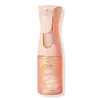What's inside
What's inside
 Key Ingredients
Key Ingredients

 Benefits
Benefits

 Concerns
Concerns

 Ingredients Side-by-side
Ingredients Side-by-side

Caprylic/Capric Triglyceride
MaskingHelianthus Annuus Seed Oil
EmollientOlea Europaea Fruit Oil
MaskingMacadamia Integrifolia Seed Oil
Skin ConditioningSimmondsia Chinensis Seed Oil
EmollientCocos Nucifera Oil
MaskingParfum
MaskingSqualane
EmollientPaullinia Cupana Fruit Extract
Skin ConditioningPtychopetalum Olacoides Bark/Root Extract
EmollientPlinia Cauliflora Fruit Extract
Skin ConditioningPlankton Extract
Skin ConditioningEuterpe Oleracea Fruit Oil
Skin ConditioningAmaranthus Caudatus Seed Extract
Skin ConditioningTriticum Vulgare Germ Extract
Skin ConditioningHordeum Distichon Extract
Skin ProtectingTocopherol
AntioxidantEthylhexylglycerin
Skin ConditioningBenzyl Alcohol
PerfumingBenzyl Salicylate
PerfumingCoumarin
PerfumingHydroxycitronellal
PerfumingLimonene
PerfumingLinalool
PerfumingBenzyl Benzoate
AntimicrobialCitral
PerfumingEugenol
PerfumingCaprylic/Capric Triglyceride, Helianthus Annuus Seed Oil, Olea Europaea Fruit Oil, Macadamia Integrifolia Seed Oil, Simmondsia Chinensis Seed Oil, Cocos Nucifera Oil, Parfum, Squalane, Paullinia Cupana Fruit Extract, Ptychopetalum Olacoides Bark/Root Extract, Plinia Cauliflora Fruit Extract, Plankton Extract, Euterpe Oleracea Fruit Oil, Amaranthus Caudatus Seed Extract, Triticum Vulgare Germ Extract, Hordeum Distichon Extract, Tocopherol, Ethylhexylglycerin, Benzyl Alcohol, Benzyl Salicylate, Coumarin, Hydroxycitronellal, Limonene, Linalool, Benzyl Benzoate, Citral, Eugenol
Butyl Methoxydibenzoylmethane 3%
UV AbsorberHomosalate 0.5%
Skin ConditioningEthylhexyl Salicylate 5%
UV AbsorberOctocrylene 10%
UV AbsorberAlcohol Denat.
AntimicrobialC12-15 Alkyl Benzoate
AntimicrobialButyloctyl Salicylate
Skin ConditioningDiisopropyl Adipate
EmollientSodium Hyaluronate
HumectantTocopherol
AntioxidantHydrogenated Castor Oil
EmollientTetrahexyldecyl Ascorbate
AntioxidantRicinus Communis Seed Oil
MaskingDicaprylyl Carbonate
EmollientVa/Butyl Maleate/Isobornyl Acrylate Copolymer
Parfum
MaskingMica
Cosmetic ColorantT-Butyl Alcohol
PerfumingTin Oxide
AbrasiveHexyl Cinnamal
PerfumingBenzyl Salicylate
PerfumingLinalool
PerfumingCI 77891
Cosmetic ColorantCI 77491
Cosmetic ColorantButyl Methoxydibenzoylmethane 3%, Homosalate 0.5%, Ethylhexyl Salicylate 5%, Octocrylene 10%, Alcohol Denat., C12-15 Alkyl Benzoate, Butyloctyl Salicylate, Diisopropyl Adipate, Sodium Hyaluronate, Tocopherol, Hydrogenated Castor Oil, Tetrahexyldecyl Ascorbate, Ricinus Communis Seed Oil, Dicaprylyl Carbonate, Va/Butyl Maleate/Isobornyl Acrylate Copolymer, Parfum, Mica, T-Butyl Alcohol, Tin Oxide, Hexyl Cinnamal, Benzyl Salicylate, Linalool, CI 77891, CI 77491
 Reviews
Reviews

Ingredients Explained
These ingredients are found in both products.
Ingredients higher up in an ingredient list are typically present in a larger amount.
Benzyl Salicylate is a solvent and fragrance additive. It is an ester of benzyl alcohol and salicylic acid. This ingredient can be naturally found in some plants and plant extracts.
In fragrances, Benzyl Salicylate may be a solvent or a fragrance component. In synthetic musk scents, it is used as a solvent. For floral fragrances such as lilac and jasmine, it is used as a fragrance component. The natural scent of Benzyl Salicylate is described as "lightly-sweet, slightly balsamic".
While Benzyl Salicylate has been associated with contact dermatitis and allergies, emerging studies show it may not be caused by this ingredient alone.
However, this ingredient is often used with fragrances and other components that may cause allergies. It is still listed as a known allergen in the EU. We recommend speaking with a professional if you have concerns.
Another study from 2021 shows Benzyl Salicylate may have anti-inflammatory properties.
Learn more about Benzyl SalicylateLinalool is a fragrance and helps add scent to products. It's derived from common plants such as cinnamon, mint, citrus, and lavender.
Like Limonene, this ingredient oxidizes when exposed to air. Oxidized linalool can cause allergies and skin sensitivity.
This ingredient has a scent that is floral, spicy tropical, and citrus-like.
Learn more about LinaloolParfum is a catch-all term for an ingredient or more that is used to give a scent to products.
Also called "fragrance", this ingredient can be a blend of hundreds of chemicals or plant oils. This means every product with "fragrance" or "parfum" in the ingredients list is a different mixture.
For instance, Habanolide is a proprietary trade name for a specific aroma chemical. When used as a fragrance ingredient in cosmetics, most aroma chemicals fall under the broad labeling category of “FRAGRANCE” or “PARFUM” according to EU and US regulations.
The term 'parfum' or 'fragrance' is not regulated in many countries. In many cases, it is up to the brand to define this term.
For instance, many brands choose to label themselves as "fragrance-free" because they are not using synthetic fragrances. However, their products may still contain ingredients such as essential oils that are considered a fragrance by INCI standards.
One example is Calendula flower extract. Calendula is an essential oil that still imparts a scent or 'fragrance'.
Depending on the blend, the ingredients in the mixture can cause allergies and sensitivities on the skin. Some ingredients that are known EU allergens include linalool and citronellol.
Parfum can also be used to mask or cover an unpleasant scent.
The bottom line is: not all fragrances/parfum/ingredients are created equally. If you are worried about fragrances, we recommend taking a closer look at an ingredient. And of course, we always recommend speaking with a professional.
Learn more about ParfumTocopherol (also known as Vitamin E) is a common antioxidant used to help protect the skin from free-radicals and strengthen the skin barrier. It's also fat soluble - this means our skin is great at absorbing it.
Vitamin E also helps keep your natural skin lipids healthy. Your lipid skin barrier naturally consists of lipids, ceramides, and fatty acids. Vitamin E offers extra protection for your skin’s lipid barrier, keeping your skin healthy and nourished.
Another benefit is a bit of UV protection. Vitamin E helps reduce the damage caused by UVB rays. (It should not replace your sunscreen). Combining it with Vitamin C can decrease sunburned cells and hyperpigmentation after UV exposure.
You might have noticed Vitamin E + C often paired together. This is because it is great at stabilizing Vitamin C. Using the two together helps increase the effectiveness of both ingredients.
There are often claims that Vitamin E can reduce/prevent scarring, but these claims haven't been confirmed by scientific research.
Learn more about Tocopherol